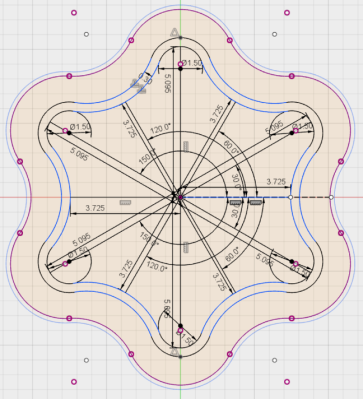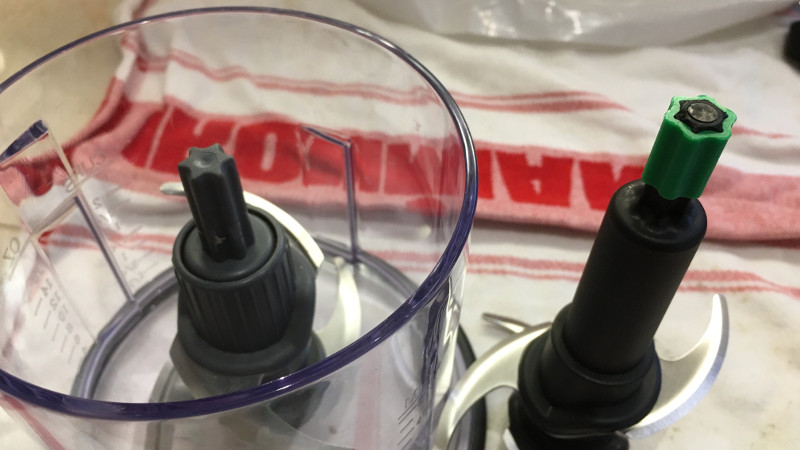Do you like change for the sake of change? Are you incapable of leaving something in a known and working state, and would rather fiddle endlessly with it? Are you unconcerned about introducing arbitrary compatibility issues into your seemingly straight-forward product line? If you answered “Yes” to any of those questions, have we got the job for you! You can become a product engineer, and spend your days confounding customers who labor under the unrealistic expectation that a product they purchased in the past would still work with seemingly identical accessories offered by the same company a few years down the line. If interested please report to the recruitment office, located in the darkest depths of Hell.

Until the world is rid of arbitrary limitations in consumer hardware, we’ll keep chronicling the exploits of brave warriors like [Alex Whittemore], who take such matters into their own hands. When he realized that the blades for his newer model Ninja food processor didn’t work on the older motor simply because the spline was a different size, he set out to design and print an adapter to re-unify the Ninja product line.
[Alex] tried taking a picture of the spline and importing that into Fusion 360, but in the end found it was more trouble than it was worth. As is the case with many printed part success stories, he ended up spending some intimate time with a pair of calipers to get the design where he wanted it. Once broken down into its core geometric components (a group of cylinders interconnected with arches), it didn’t take as long as he feared. In the end the adapter may come out a bit tighter than necessary depending on the printer, but that’s nothing a few swift whacks with a rubber mallet can’t fix.
This project is a perfect example of a hack that would be much harder (but not impossible) without having access to a 3D printer. While you could create this spline adapter by other means, we certainly wouldn’t want to. Especially if you’re trying to make more than one of them. Small runs of highly-specialized objects is where 3D printing really shines.
 This is an entry in Hackaday’s
This is an entry in Hackaday’s
Repairs You Can Print contest
The twenty best projects will receive $100 in Tindie credit, and for the best projects by a Student or Organization, we’ve got two brand-new Prusa i3 MK3 printers. With a printer like that, you’ll be breaking stuff around the house just to have an excuse to make replacement parts.















totally wild
Well done.
Reverse engineering a part isn’t too bad if you use the same/similar kind of tools that were used to make it originally. Once you realize that almost all mechanical objects are designed with similar software (CAD, 3D modeling software, etc.) with similar capabilities the reverse engineering becomes a bit more feasible and less stressful. Just consider how you would draw the part in software. Take some measurements, break it down into the elementary shapes add and subtract as needed, and start adding the fillets etc. Try the shapes and fillets with nice round numbers first (since the original designer probably did) and if that doesn’t work out, switch to Imperial units and throw all kinds of fractions and decimals in there until you find the right one. :-)
The difficult items (for me) to reproduce are organic, flowing items that were drawn by hand using french curves and sculpted in clay etc. If I were to attempt something like that I would start molding the original part directly or maybe trying to get a 3d scan of the part.
Having a 3d background other than CAD has been very helpful for me in that respect. It’s much more sculpty.
Actually, a Torx E6 socket (or a ground Torx T27 screw) would totally fit, perhaps requiring some paper or vinyl tape as a shim or a “gentle” whack with a hammer.
Most of the time, reusing parts out of their scope is much better than designing your own parts that may take a long time and not be very strong.
Interesting Info, but I don’t know, how it helps to make the adapter: You need the inner and outer spline.
Sure hope that the plastic used is an approved indirect food additive.